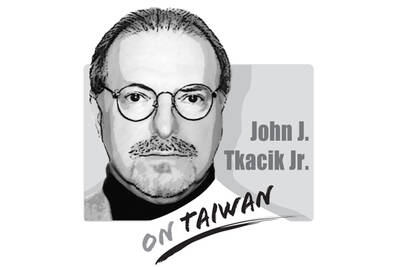When President Chen Shui-bian (
It has now become a matter of urgency for the central government to put a stop to the unreasonable increase in public works spending by local governments.
The development of industrial zones is a typical example of how the the national resources have been misused. Under the Ministry of Economic Affairs alone, around 800 hectares of industrial zones across the nation remain vacant, which converts into an investment of NT$30 to NT$40 billion, which has not seen any return. Besides, the occupancy rate of industrial zones under the National Science Council is just 50 percent.
Over the past few years, the transformation of the nation's industrial structure, Taiwan's economic slump, and changes in the domestic and international commercial structure of other countries have challenged the development of the nation's industrial zones.
In the past, industrial zones developed by the Industrial Development Bureau (IDB) had been competitive and profitable as the price of the land used by industrial parks across the nation was only one-third or two-thirds of the market price.
However, the stagnant economic growth of the nation has made it difficult for the government to sell off these industrial zones, either through state-run or private enterprises. The compounding of interest on these properties has pushed prices up even further, so that land in industrial zones is no longer competitive with other areas.
The root of the problem lies with the provisions of government investment incentive programs and the Statute for Upgrading Industries (
On the technological and economic front, California's Silicon Valley is much stronger than Taiwan. Major chip-makers and optoelectronic component manufacturers are in the north of Silicon Valley and biotech companies are in the south. Using land for multiple purposes is becoming the mainstream idea, and each county or region can also have a distinctive industry. Clearly, this is something the government can learn from the US.
According to statistics, there are currently nearly 2,500 hectares of land that the government has approved or is in the process of approving for use as industrial zones. If we add the land already available for these purposes, there is sufficient land designated for industrial zones to meet the needs of the next five years. Quantity is clearly not a problem and we should now focus on quality.
Local governments should take careful account and plan for the future, rather than rushing ahead and then looking for support from the central government further down the track. The government should first seek to draw up an effective and comprehensive plan regarding public works projects, such as industrial zones, airports and harbors. It shouldn't give local governments a free hand to use such projects to pay/settle political debts, in total disregard for the needs of the market, for such political interference will ultimately harm the nation's economic development.
Andrew Huang is the director of the National Volunteer Association.
TRANSLATED BY DANIEL CHENG
I have heard people equate the government’s stance on resisting forced unification with China or the conditional reinstatement of the military court system with the rise of the Nazis before World War II. The comparison is absurd. There is no meaningful parallel between the government and Nazi Germany, nor does such a mindset exist within the general public in Taiwan. It is important to remember that the German public bore some responsibility for the horrors of the Holocaust. Post-World War II Germany’s transitional justice efforts were rooted in a national reckoning and introspection. Many Jews were sent to concentration camps not
Deflation in China is persisting, raising growing concerns domestically and internationally. Beijing’s stimulus policies introduced in September last year have largely been short-lived in financial markets and negligible in the real economy. Recent data showing disproportionately low bank loan growth relative to the expansion of the money supply suggest the limited effectiveness of the measures. Many have urged the government to take more decisive action, particularly through fiscal expansion, to avoid a deep deflationary spiral akin to Japan’s experience in the early 1990s. While Beijing’s policy choices remain uncertain, questions abound about the possible endgame for the Chinese economy if no decisive

Somehow, US intelligence identified “the Houthis’ top missile guy” and pinpointed his exact location. At 1348 hours (Washington time), March 15, President Trump’s national security advisor Mike Waltz texted, “positive ID of him walking into his girlfriend’s building.” The unsuspecting Romeo entered. High above, the drone monitoring the building registered a flash. When the smoke cleared, Mr. Waltz texted, “…And it’s now collapsed.” RIP. The star-crossed “top missile guy” had been target number one in the now uproarious US Navy bombing campaign on that Sunday against the Yemeni rebels who have been holding the Red Sea hostage since October 19,
Actress Michelle Yeoh (楊紫瓊) on March 13 posted an Instagram caption after the opening of Tiffany’s Taipei flagship store two days earlier that read: “Thank you Tiffany for inviting us to Taipei China.” We know that Yeoh knows Taipei is in Taiwan, not China, because the caption was posted following comments she made — in English — in which she said: “Thank you to Tiffany for bringing me to Taipei, because I do love this country very much.” Her remarks and the subsequent Instagram caption were reported in Taiwan, in Chinese and English- language media such as Radio Free Asia, and overseas,